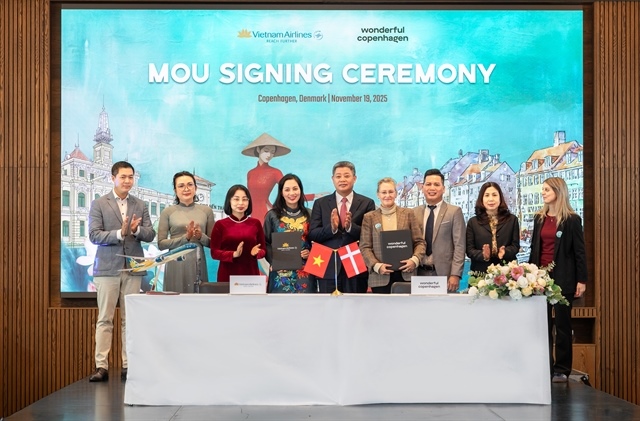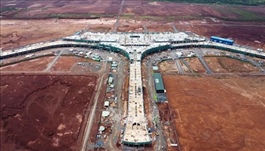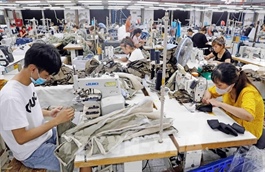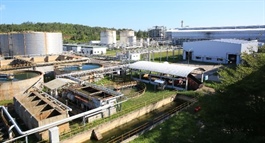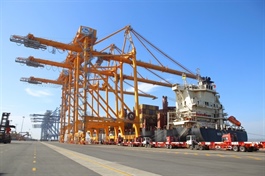Việt Nam's manufacturing sails with cautious optimism amid challenges
Việt Nam's manufacturing sails with cautious optimism amid challenges
The S&P Global Vietnam Manufacturing Purchasing Managers' Index (PMI) remained above the 50.0 no change mark in August and signalled a second consecutive monthly improvement in the health of the manufacturing sector.
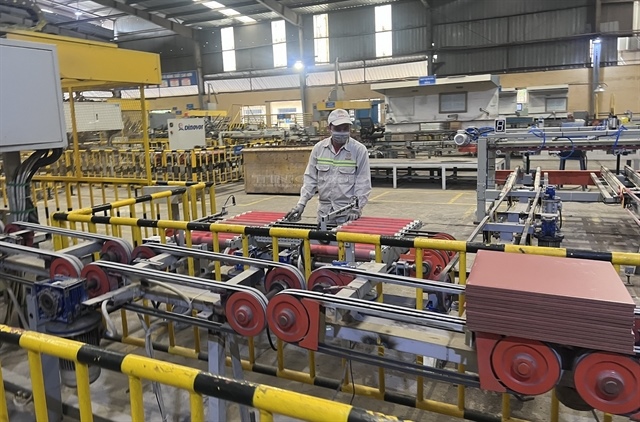
Production of tiles at Prime Phổ Yên JSC in Thái Nguyên Province. In August, Việt Nam saw a second consecutive monthly improvement in the health of the manufacturing sector. —Photo thainguyen.gov.vn |
Việt Nam’s manufacturing sector kept its steady course in August, as the S&P Global Vietnam Manufacturing Purchasing Managers’ Index (PMI) stayed above the crucial 50.0 mark for a second consecutive month, signalling ongoing growth despite emerging headwinds.
At 50.4 in August, the PMI slipped from July’s 52.4, reflecting only a slight improvement in business conditions. According to the S&P Global report released on September 3, manufacturing production continued to expand for the fourth month running, though growth slowed compared to the previous month.
Companies that increased output did so on the back of positive new order inflows, yet the overall upturn weakened due to subdued demand, partly influenced by persistent US tariffs. New orders fell in August after a brief rise in July — the first increase in four months — highlighting ongoing challenges in demand.
Export orders dropped for the tenth consecutive month, with the decline in August sharper than the total fall in new business, underscoring the impact of tariff-related obstacles on Việt Nam’s manufacturing exports.
In response to reduced new orders, manufacturers trimmed their workforce for the eleventh month running, although the pace of job cuts remained modest. The slowdown also resulted in a marked decrease in work backlogs — the largest since April — pointing to spare capacity in the sector.
“While it was positive to see output expand again during August, a renewed fall in new orders calls into question how long firms will be able to keep increasing production," said Economics Director at S&P Global Market Intelligence Andrew Harker. "The drop in new sales was led by exports, which decreased solidly again as issues around tariffs continued to impact the sector.”
Finished goods inventories also declined as manufacturers became cautious about holding stock amid falling new orders and ongoing dispatch of products to customers.
Interestingly, purchasing activity rose for the second consecutive month, driven by higher production needs and efforts to build inventory ahead of anticipated demand improvements. However, stocks of purchases fell due to reduced imports and material shortages, which also caused supplier delivery times to lengthen considerably.
Input prices rose again in August, pushed higher by material shortages, tariffs and increased transportation costs. This marked the fastest inflation rate in 2025 so far, though still below the series average. Output prices increased modestly for the third month running, reflecting higher taxes and the pass-through of input costs to customers.
Business confidence improved to a six-month high, yet remained below the historical average. Many respondents expressed hope for a rise in new orders over the coming year, fostering optimism about future output. However, concerns about the global economic outlook continued to temper this confidence.
“Firms were at least more confident in the year-ahead outlook, in part based on hopes of a pick-up in demand, which encouraged a rise in purchasing activity. However, manufacturers were hampered to some extent by material shortages,” added Harker.
“With the path ahead for tariffs seeming more stable now, the predicted improvements in demand will hopefully materialise in the months ahead, helping to maintain production growth in the sector.”
- 07:50 04/09/2025



